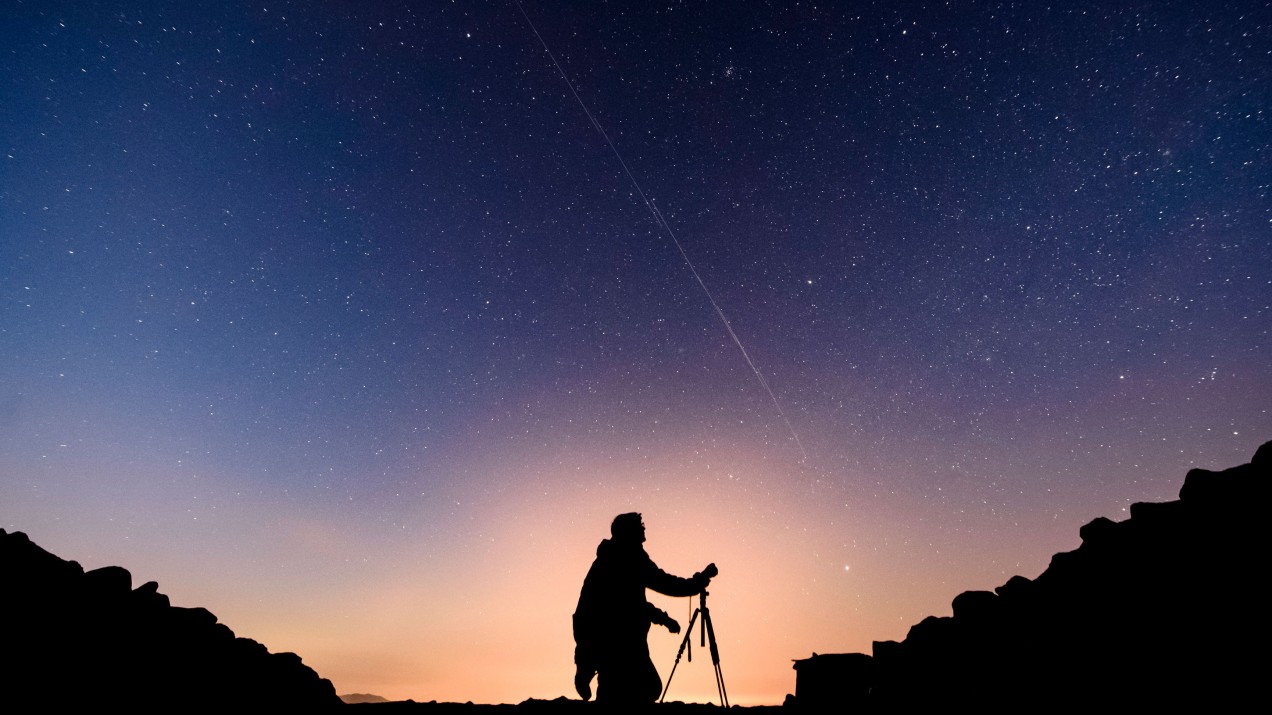


SpaceX is not popular with astronomers right now. The first 60 satellites of its planned Starlink constellation, launched in May, were clearly visible in the sky, as were the following 60 launched in November. Alarmed scientists have warned that the sudden influx of thousands of new bright lights in the sky will wreck our view of the stars forever.
The problems took SpaceX completely by surprise. “No one thought of this,” said SpaceX president and COO Gwynne Shotwell in a press call on Friday. “We didn’t think of it. The astronomy community didn’t think of it.”
In response to increased pressure, SpaceX has said it will test an experimental coating that is meant to make its Starlink satellites less reflective. According to Shotwell, the coating will go on the bottom of one of the 60 new satellites due to be launched into orbit later this month.
The company wants to test it out before applying it to more satellites in the future, since the anti-reflective properties could create thermal changes that adversely affect performance. Shotwell believes the solution will be modified over “trial and error” to make it work safely and properly.
In fact, nobody knows yet whether the coating will make much of a difference. “It's worth a try,” says Jonathan McDowell, an astronomer at the Harvard-Smithsonian Center for Astrophysics. “But I fear it will be offset by the fact that they are moving the constellation to a lower orbit. We'll see. I appreciate the efforts that SpaceX are making.”
McDowell believes the coating would have to reduce the brightness of the satellites by a magnitude of 3 to make them invisible to the naked eye. “That would preserve the night sky for the general public,” he says.
But there’s no telling yet whether this would actually help professional astronomers. For example, the Large Synoptic Survey Telescope, currently under construction in Chile, is supposed to help astronomers probe for signs of dark matter and dark energy. It’s designed to search for extremely faint signals, which means even if a satellite is not bright, its mere presence can create distortions in images.
SpaceX has plans to launch as many as 42,000 Starlink satellites into orbit. LSST chief scientist Anthony Tyson told the New York Times his calculations say this number of satellites would basically render 20% of the telescope’s observations worthless.
“Optical astronomy will have a big problem, especially in trying to take images of the faintest and most distant objects,” says McDowell. “There will be some projects that are no longer doable and others that will take much longer, and therefore be more expensive.” He’s especially concerned about the decreased ability to spot potentially hazardous asteroids before they get close to Earth.
A more effective solution would be to place the satellites in higher orbits, which is what Starlink competitor OneWeb is doing with its satellite constellation. This requires more powerful transmitters––incurring higher costs––but it’s the only solution that would significantly reduce the potential for interference. The lack of regulations around this issue means SpaceX can do as little or as much as it likes to remedy it.